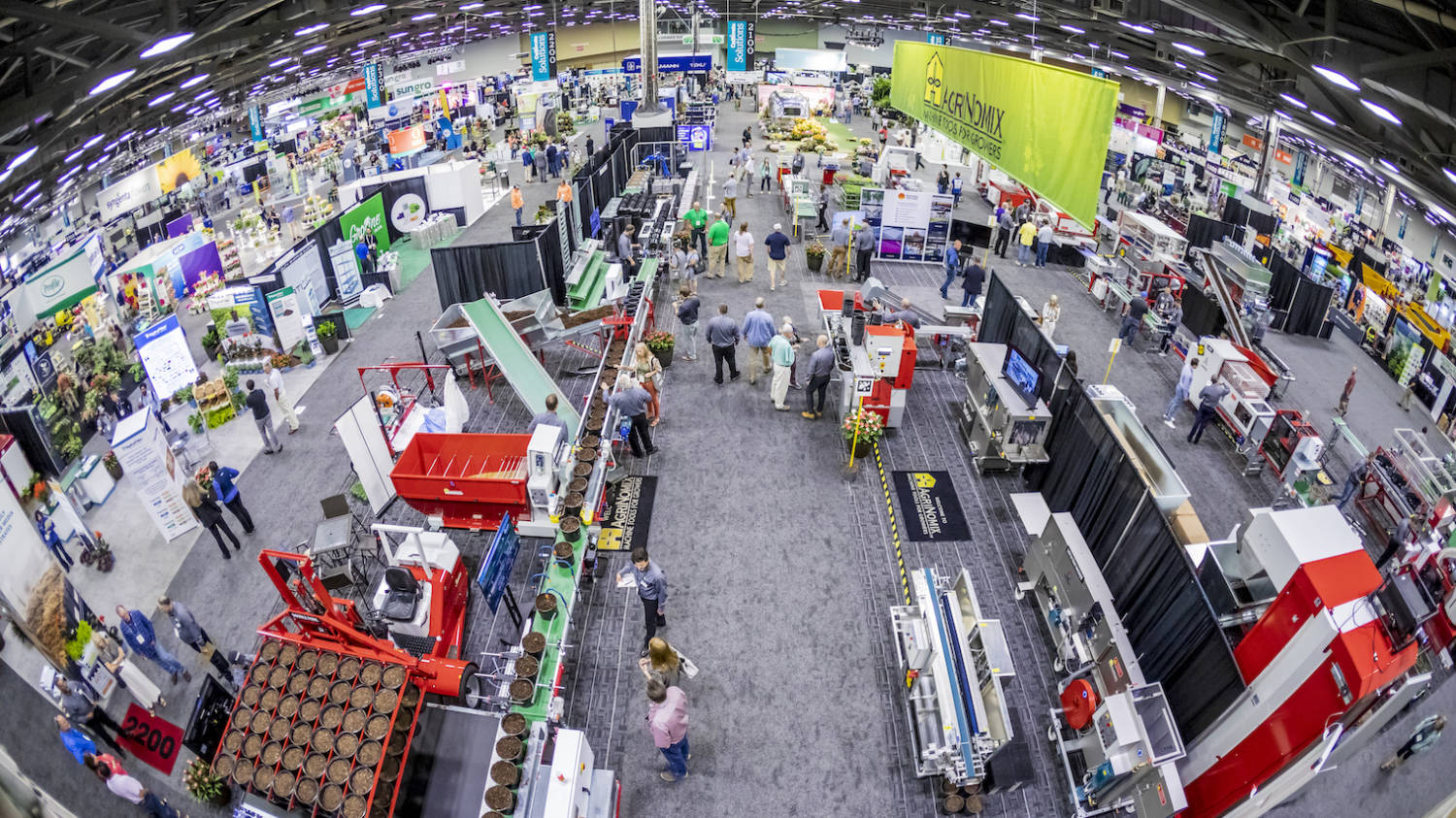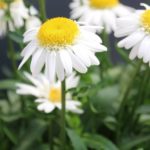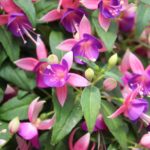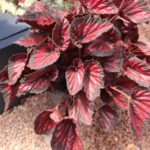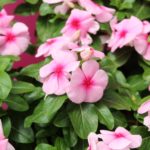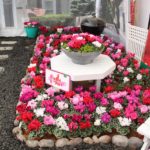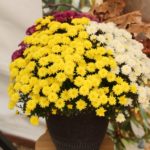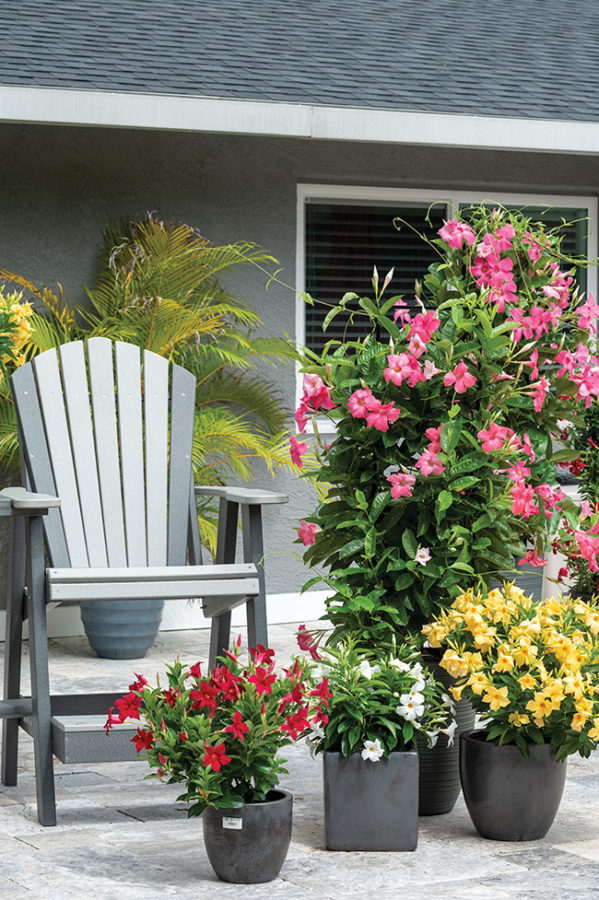
Sun Parasol Mandevillas: Culture Report
For 20 years, Suntory Flowers has been planting paradise with Sun Parasol mandevillas. Once consumers experience the easy care and outstanding summer garden performance, they are hooked. Extensive breeding has delivered shorter crop times, superior branching and disease resistance, along with a wide assortment of colors and forms.
The Sun Parasol family has been organized into subseries:
- Sun Parasol Original Group: Versatile, bushy type with widest color range, more like Dipladenia.
- Sun Parasol Giant Group: Classic vining Mandevillas with large flowers, vigorous growth.
- Sun Parasol Pretty Group: High flower count, dense vining, smaller leaves, most cold tolerant.
- Sun Parasol Garden Group: Naturally compact, powerful branching with low breaks, trails nicely in hanging baskets.
- ‘Sun Parasol Apricot’ is a gorgeous, standalone designer variety with large blooms and high vigor. ‘Mitebuster Red’ is an upright dipladenia that’s naturally resistant to mites and leaf spot. Sister series Sundenia offers a gorgeous vining crimson variety for trellises and more compact varieties for baskets and containers. You can think of these as the Sun Parasol Original varieties on steroids.
Most Sun Parasol plants are produced by specialists in the South because they require a lot of heat, but many northern growers also produce them from liners or cuttings.
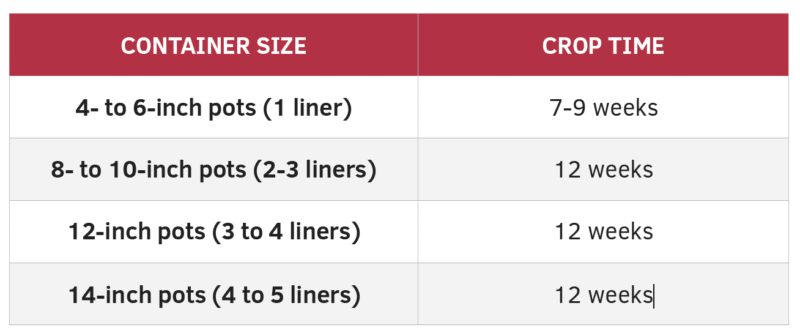
Propagation
Sun Parasol Original and Garden varieties (with the exception of Original Sunbeam) are available as unrooted cuttings. The top two liner producers are Sun-Fire Nurseries and Aris Horticulture in Florida. Northern and southern growers stick cuttings in the summer — June and July for larger finishing pots and August through October for smaller finishing pots.
Mandevillas prefer less misting than typical bedding plants to build callused cuttings. Once you see callused stems, turn off the mist but keep plants in a warm environment with high humidity to encourage rooting. Optimum temperatures are 80° F days and 70° F nights. After 10 days of moderate misting, the mist can be turned off (if air humidity is maintained at 70 to 100% in the mist house). Rooting hormone helps speed up the rooting process but is not absolutely necessary.
In five to six weeks, the cuttings are developed enough to move to a normal greenhouse environment and be hardened off. In northern states, the plants should be exposed to full sun. In southern states, a light shade of 30% should be provided to minimize plant stress. In this phase, plants will finish rooting in the tray cells. It is important to let plants root well in the cell, but not hold too long to become root bound or woody.
Transplanting
Northern growers should continue to grow Sun Parasol plants in the greenhouse. Southern growers can move plants outside to take advantage of warm summer temperatures. Light intensity and temperature are the greatest influencers on timing for spring sales.
In states with lower humidity, like California and Arizona, light shade is beneficial to reduce high transpiration through leaves. In states with high humidity, like Florida and Texas, plants can remain in full sun.
Late summer and fall are build-up times for mandevillas. Northern growers should keep plants in a greenhouse that maintains temperatures of 40° F or higher. In the South, plants can stay outside but frost protection is recommended to avoid leaf drop. If extreme or abnormal winter weather is forecasted, make a plan to move crops inside a greenhouse to reduce loss counts.
Finishing
Temperature and light:
Sun Parasol is a high-light, high-temperature crop. Shade from plants overhead will slow growth and delay flowering. For active growth, keep day temperatures around 80° F and night temperatures above 60° F. Lower temperatures can be used but plants will be slower.
Keep light levels at 5,000 to 7,000 footcandles. Buds are initiated with 10- to 11-hour days. Supplemental lighting will be required in the North for spring sales windows. High pressure sodium lights or LED lights that increase day length and light intensity should be turned on in January and February to enhance growth and flower development.
The Pretty Group needs full light in the spring but benefits from partial shade in the summer. Flower buds can abort if exposed to too much light.
Media, nutrition and irrigation:
Most well-drained commercial soil mixes should be satisfactory. Maintain a pH of 5.8 to 6.2 and a fertilizer rate of 100 to 200 ppm NPK. For large containers, add a controlled release fertilizer at one fourth the rate.
An EC of 2500 to 3000 is the optimum range.
Keep plants on the dry side when maturing. Sun Parasol (and mandevillas) do not like to be too wet.
In the spring, when plants are actively growing, increase fertilizer rates to 200 to 300 ppm nitrogen. In areas with alkaline water, add iron chelate to prevent leaf chlorosis.
Pinching and Plant Growth Regulators:
Pinch to increase branching and control growth. It is beneficial in small containers or to keep vines better attached to supports. Some growers prefer not to pinch because it can cause scarring.
Heavy watering can produce growth with long internodes. Reducing irrigation frequency can reduce internode length. Again, mandevilla does not like to be left too wet or over watered.
To keep side shoots shorter, you can use a tank mix of Cycocel at 600 ppm and B-Nine at 800 ppm. Apply only as a spray. In general, the highest Cycocel rate that does not cause excessive leaf yellowing can be used, and then B-Nine rate can be raised or lowered to adjust the strength of the tank mix.
Bonzi produces smaller flowers and should be avoided.
Pest and Disease Control:
Good airflow helps prevent foliar leaf spot. Watering in the morning helps. Prevent fusarium and botrytis by keeping plants dry in the winter. If plants are held cool and wet overnight, foliage can become necrotic.
Pests to monitor include aphids, thrips, spider mites, whiteflies and mealy bugs.
For more information about Sun Parasol mandevillas, visit www.suntoryflowers.com.
Additional Resources Are Available
Suntory Flowers has additional marketing tools to help educate and support growers on the Sun Parasol mandevillas.
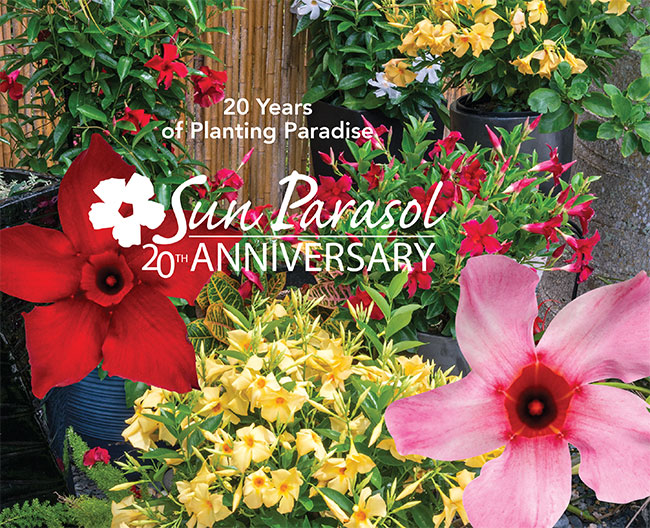
You can download Suntory Flowers’ 20th-anniversary brochure with QR Code links to product videos at https://suntoryflowers.com/wp-content/uploads/2022/01/20th- Anniversary-Brochure.pdf.
Suntory Flowers easy guide to choosing varieties for trellises and containers/baskets is also available online.









 Video Library
Video Library 
